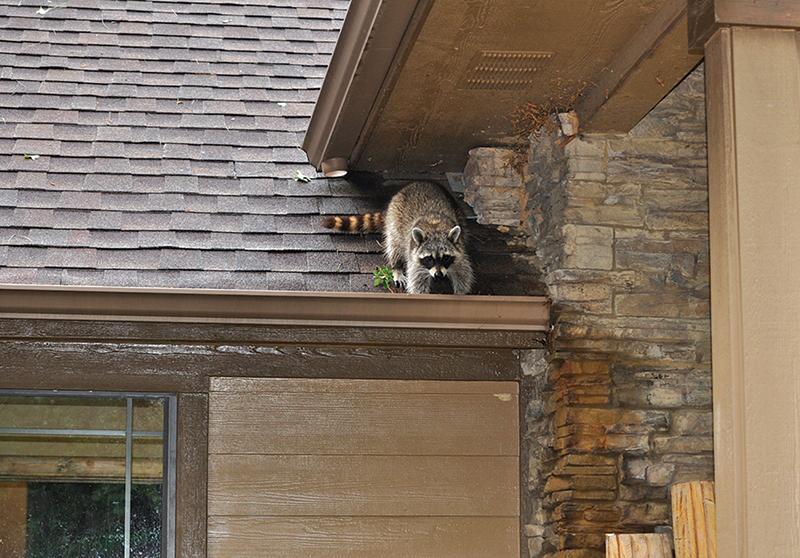Act quickly to eliminate, discourage wildlife from your home
By Gail Allyn Short
Alabama is blessed with an array of wildlife, from the squirrels, raccoons and skunks to the white-tailed deer. They’re adorable on television, in books and from a distance. But when members of the animal kingdom crawl, climb, dig, gnaw and leap into your dwelling to snag a meal and some shelter, they’re not so cute anymore. You want them away from your home. Fast. Here’s what the experts say you need to know to keep these wildlife invaders out of your space.
Rats
Habitat: They can live almost anywhere.
How they invade your home: Rats can get in your home through openings around the foundation of your home, entry holes around water and gas pipes and even around the roofline. “They can get in your house anywhere from the ground up,” says Lance Moore, owner of Critter Control in Huntsville. “They like to come in when the weather gets cold and during the summer months.”
The problem: Rats can transmit dangerous diseases with scary names like leptospirosis, hantavirus, lymphocytic Chorio-meningitis, rat bite fever and bubonic plague.
What you need to do: “Close any holes around your home’s foundation, vents and pipes going in and around your air conditioning unit,” says Moore, “and close up any other dime-size holes.” Pest control experts say you also can plug up holes with steel wool and put down glue boards and traps perpendicular to walls.
Squirrels
Their natural habitat: They love hanging around nut-bearing trees, pastures and yards.
How they invade your home: “Squirrels normally get in through the roof return or eaves,” says Stephen Weeks, a wildlife consultant with Conserv Wildlife Services. “It’s any weak spot in the construction of your house. They can chew their way into a corner of your roof, get into your attic and run around.”
The problem: “Once they get into the attic, they’ll dig out spots in your insulation or get into the small, nooks and crannies of your attic and build their nests,” says Weeks. “They can tear up your insulation and ductwork, which is expensive.” They also like chewing on electrical wires, which can start a fire.
What you need to do: “Keep your trees trimmed back from your house several feet because they can jump pretty far,” says Weeks, “and keep your gutters clean and pine straw off of your roof because that’s going to attract the animal.” Weeks also suggests hiring a contractor to close up openings in the eaves and roofline.
Raccoons
Their natural habitat: They live around wooded and waterfront properties.
What attracts them: The smell of leftovers emanating from garbage cans. They can enter through garage door openings, chimneys, crawl space access doors and roof vents.
The problem: “Sometimes they get into the attic where they eat and run around. They can tear up your insulation,” Weeks says. They can also be aggressive and carry rabies.
What you need to do: “Don’t leave trash outside,” he says. “Keep it inside until trash day.” Also, be sure to keep your trees trimmed to keep branches as far away from your roof as possible.
Skunks
Natural habitat: They live around forest edges and in urban areas. “Seventy percent of my wildlife work is skunks,” says Steve Crawford, owner of SGH Pest Management Inc., in Cullman. “They’re everywhere.”
How they invade your home: In late fall, the females look for warm nesting sites, which can include the crawl space of your house.
The problem: The smell. “January and February is when people realize they have skunks,” Crawford says. “No product on the market will eliminate that smell, and if you have ductwork in your crawl space, when the heat comes on, the smell will get in your home.”
What you need to do: Be sure to seal up the entry points around your home’s foundation, says Crawford. Other experts suggest using repellants such as homemade or commercial castor oil or capsaicin.
Bats
Natural habitat: The most common bats found in Alabama include the brown bat and the evening bat. They live in trees, caves and buildings.
How they invade your house: They can squeeze in through the gable vent, and they like hanging out in attics, along rooflines, in chimneys, behind shutters and inside walls.
The problem: Besides causing anxiety, bats’ fecal matter can transmit bacteria to humans, damage sheetrock and emit a powerful and unpleasant odor, says Crawford. The upside: Bats eat mosquitoes and other bugs.
What you need to do: Make sure all of your windows are screened. Crawford also recommends hiring someone to place a galvanized metal mesh outside of roof and gable vents.
Deer
Natural habitat: Wooded areas, but overpopulation and encroaching development push them closer to urban and suburban areas.
The problem: Deer will graze on most anything green and can destroy ornamental shrubs, flower beds and vegetable gardens. Bucks will also rub their antlers on woody saplings, which can kill the plant.
What you need to do: Perimeter fences are a good (if potentially costly) solution, Weeks says. A backyard dog can help. And certain plants, such as onions, garlic, chives, mint, catnip, lavender, sage and thyme can be planted to deter feeding in gardens, according to information from the state Department of Conservation and Natural Resources.′





